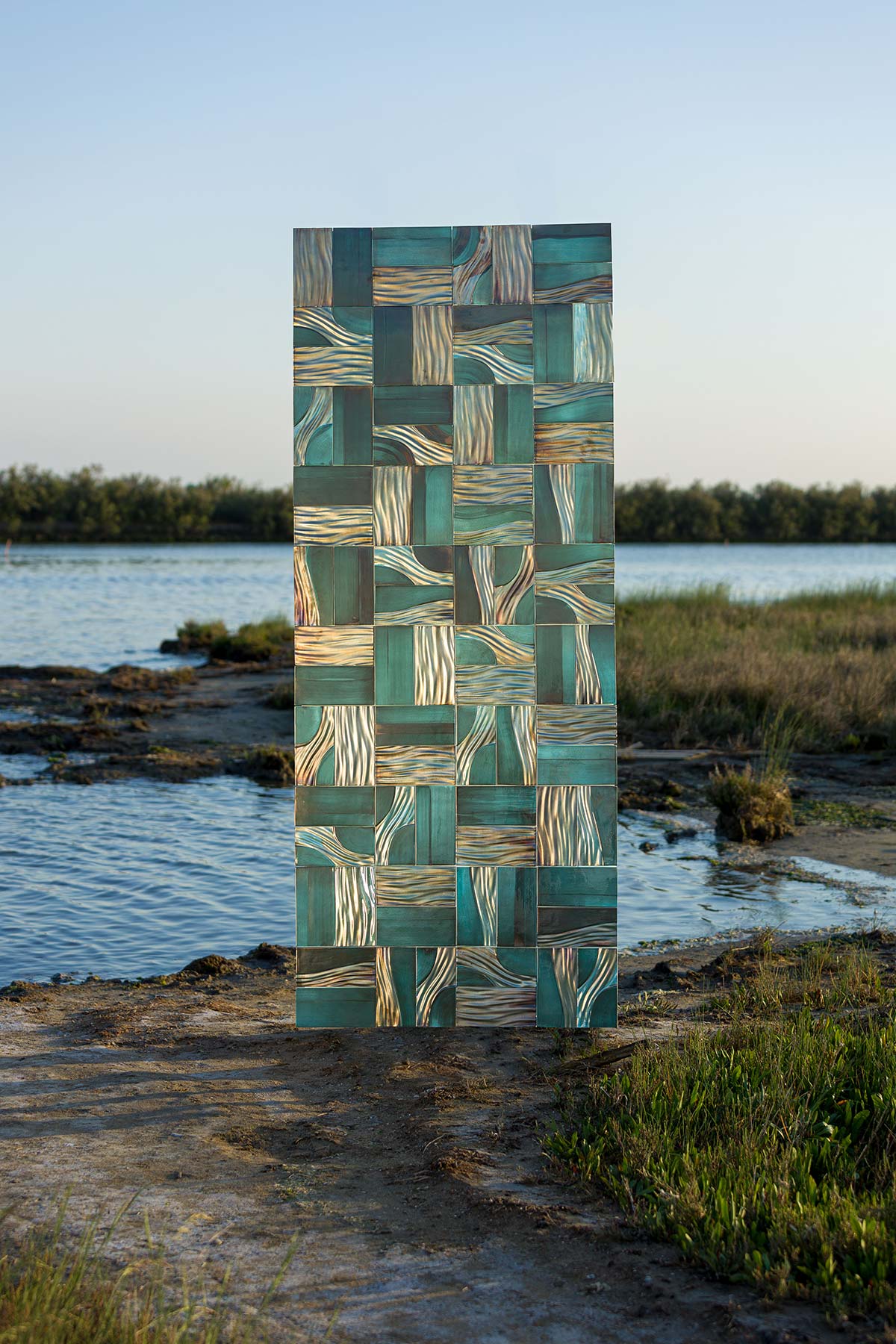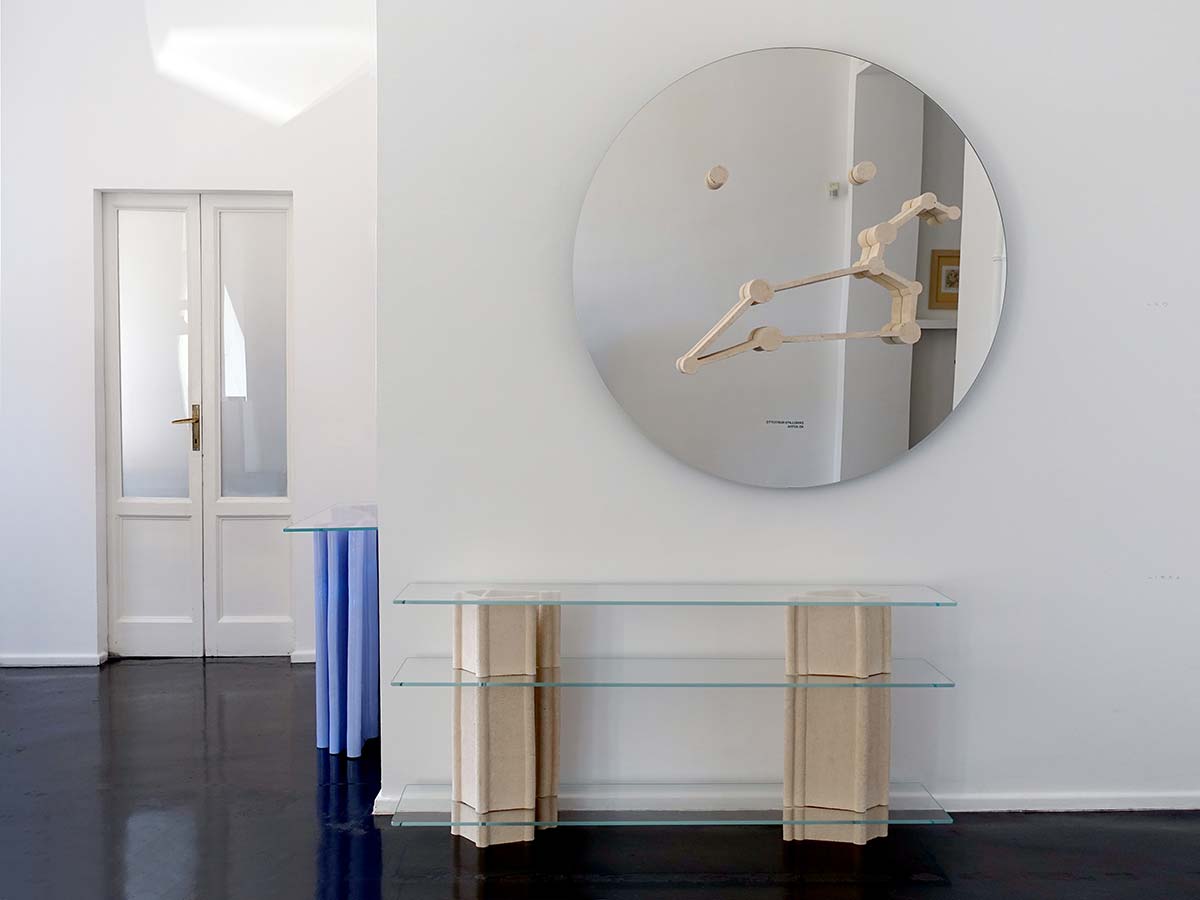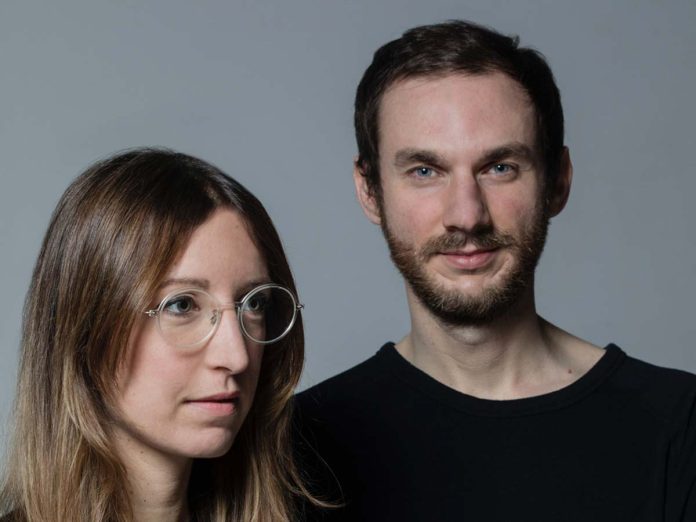“We studied at the IUAV University of Venice, but we met at the ECAL in Lausanne,” say the designers Giorgia Zanellato, born in Venice in 1987, and Daniele Bortotto, from Friuli, born in 1988. Together, they opened a studio, Zanellato/Bortotto, in Treviso since 2013. “We’ve been working together for almost ten years, but we are not also a couple in life, as often happens, and perhaps that helps us to work with greater calm. We do make a good team, though – there is no division of roles, we tried that in the past but it didn’t work. Our projects come from a continuing, constant exchange, in which it is hard to say who contributed what.”
Their secret is the great affinity that connects them, the ability to mutually complete each other: “Daniele is thoughtful, measured, while I’m more instinctive,” Giorgia tells us, and Daniele replies: “It’s true, Giorgia is much more instinctive than I am, and she is able to grasp things I cannot see, perhaps due to feminine intuition. Our projects are the result of a direct exchange, sometimes just a shared glance after having seen a place, or visited a company.”
A rare sense of complicity and sensitivity to the territory, to small companies, crafts, enabling them to excel and to become some of the most sought-after designers on the Italian and international scene. “When we took part for the first time in the SaloneSatellite, in 2013, we showed the Acqua Alta collection, which interpreted the city of Venice, a research project that continues today through the exploration and re-examination of local crafts techniques. At the Satellite, it was interesting to see the way the public identified with our objects… people saw something personal, like a souvenir of Venice, in the Acqua Alta project.”


Venice as an inspiration that is clearly visible in Barene, the new collection of ceramic surfaces for Botteganove: “These are tiles with an irregular three-dimensional texture, referencing the lands and the semi-submerged vegetation of the lagoon, which Federico Fellini described as ‘a strange tapestry, an immense, marvelous Persian carpet.’” The Barene ceramics also reflect the fascination with the lagoon in their coloring: “We are working on how to recreate the highlights and translucent effects of the water, changing from morning to dusk – this involves developing glazes and iridescent metallic surfaces.”
Another project connected with Venice is the Specola lamp, in collaboration with Incalmi, involving research on vitreous glazes applied on copper and then fired at very high temperatures: “it is an age-old technique that in Italy reached its loftiest expression with Paolo de Poli, who also worked with Gio Ponti. We fell in love with this technique, but we had trouble finding the artisans who could still go forward with it, until we discovered the enamels company Incalmi, with a furnace at Marghera, in the port facing the island of Venice.”

The direct, productive relationship between Zanellato/Bortotto and artisans can also be seen in the work conducted with the Sardinian ceramics workshop Terrapintada, already known for the Artijanus/Artijanas project, to create Ad Astra, “twelve pieces based on the constellations, created for Galleria Luisa delle Piane. Very complex furnishings, produced with the technique of ceramic extrusion, which we have taken to extremes.”
Besides all this, the studio handles the art direction for Del Savio 1910, “a company that as the name reveals has over a hundred years of history, originally specializing in Veneziana and Palladiana floors. We have reinterpreted the latter technique with a new language, using colorful seams that light up the surfaces, and also calling on international designers to work with the firm.”
Among their many collaborations, the duo continue to experiment with DeCastelli, “a global company preserves and pursues very old techniques, by now no longer in use, such as hammered metal.”
Different projects, but all sharing in one mission: “We interact with artisans and bring the tradition into a more timely dimension, to look to the future. Certain traditional firms are in difficulty, and they need to be revived and supported.”
Still very busy in spite of the exceptionally hot summer, Giorgia Zanellato and Daniele Bortotto tell us about one of their dreams: “We would like to approach the world of interior design, to make relationships between surfaces and objects, to connect the dots… and, in ideal terms, to get inspiration to narrate our world.”







